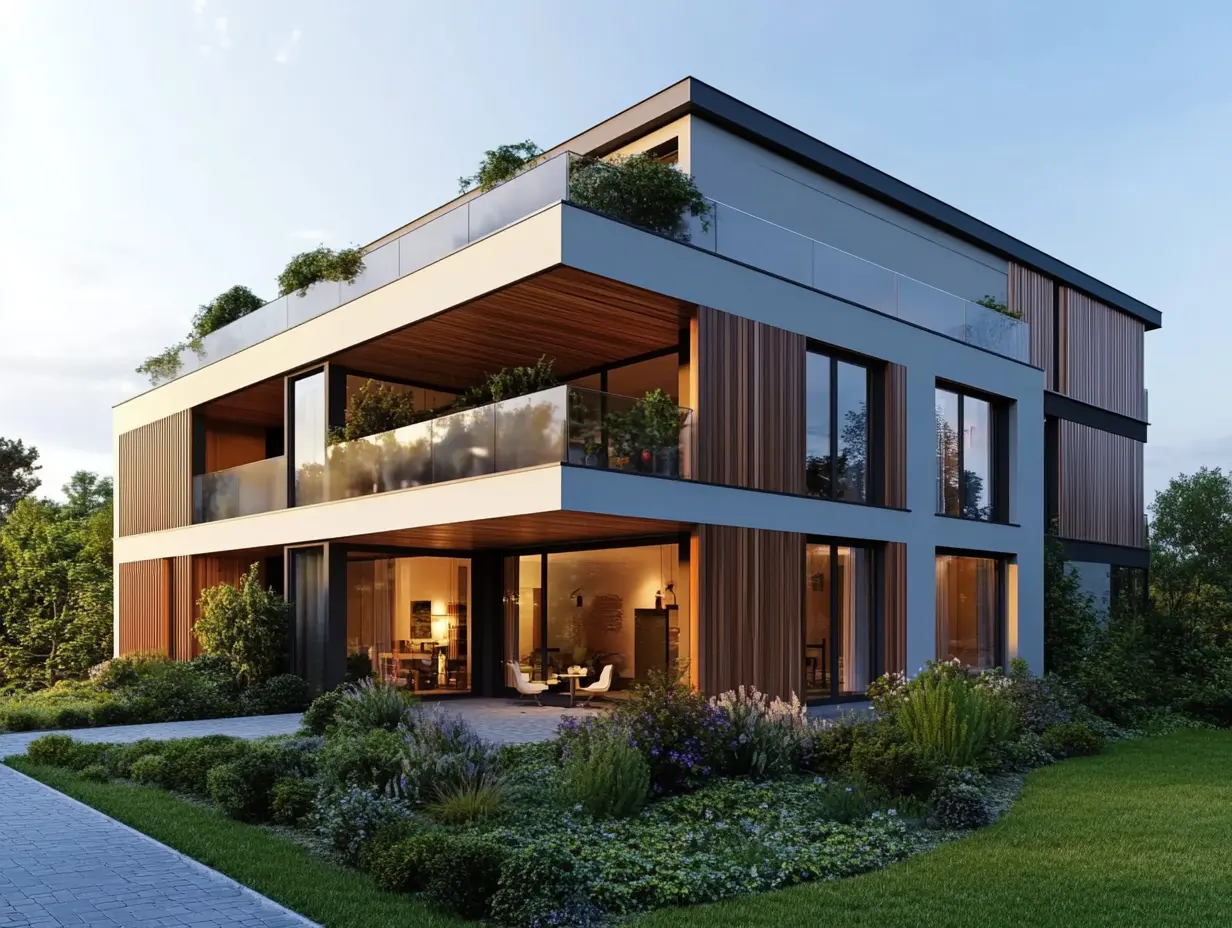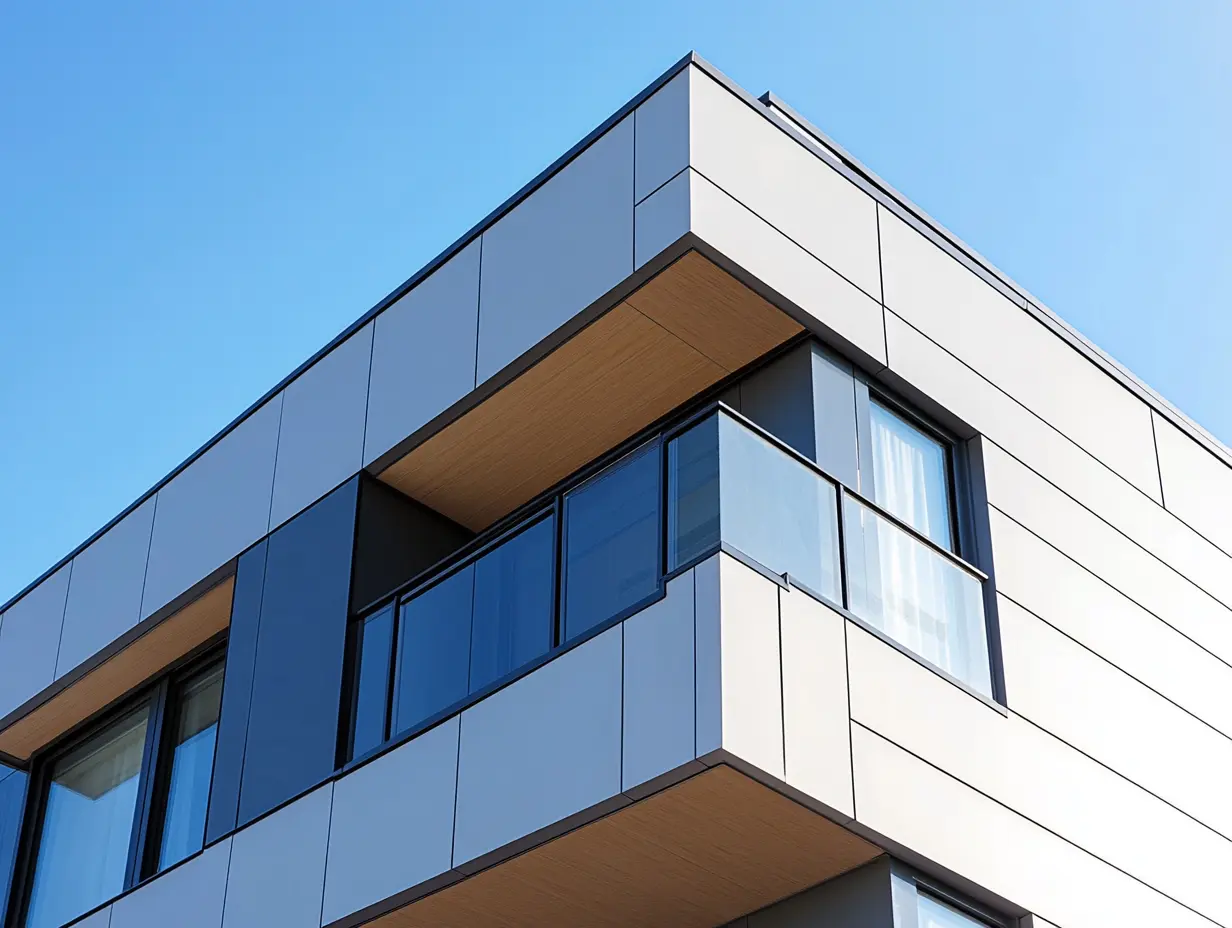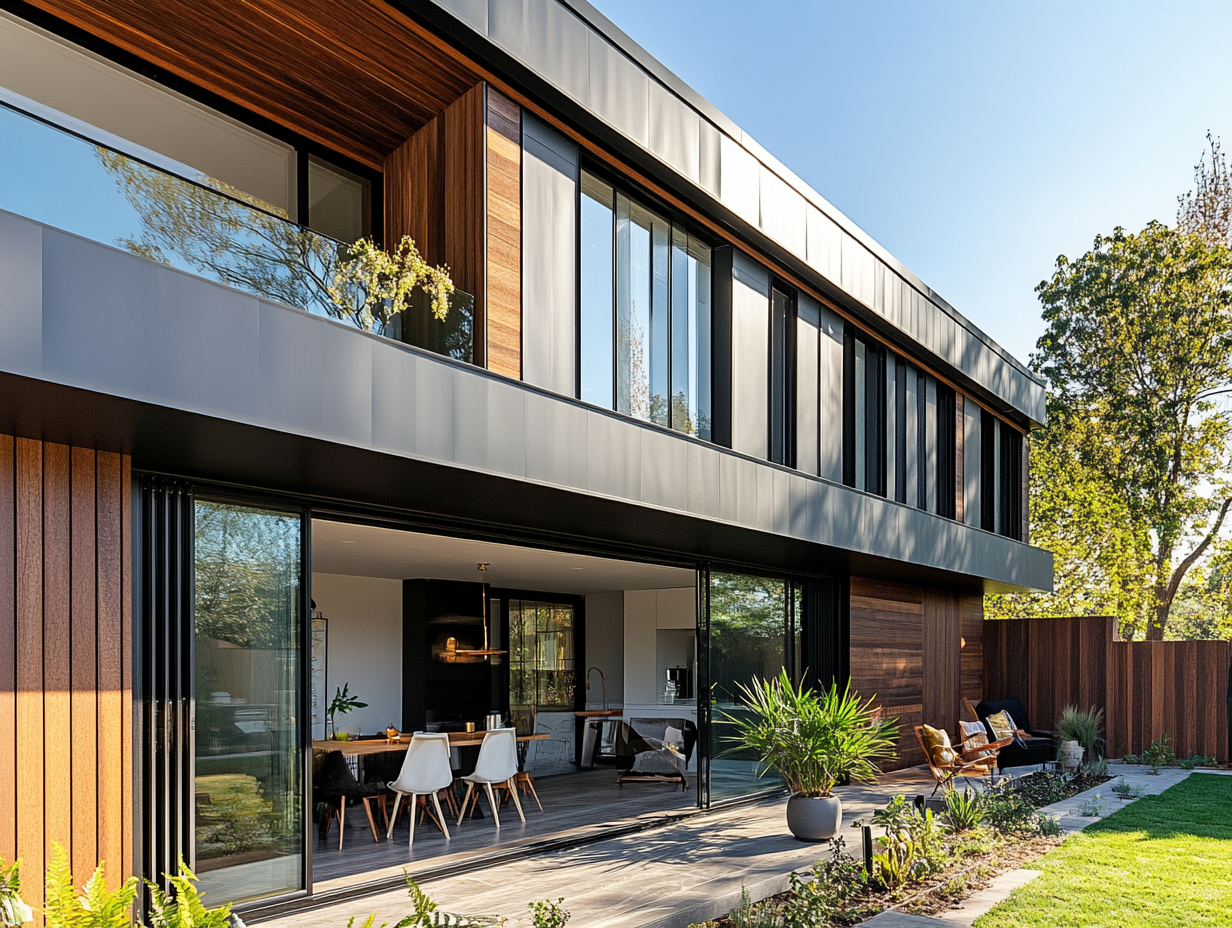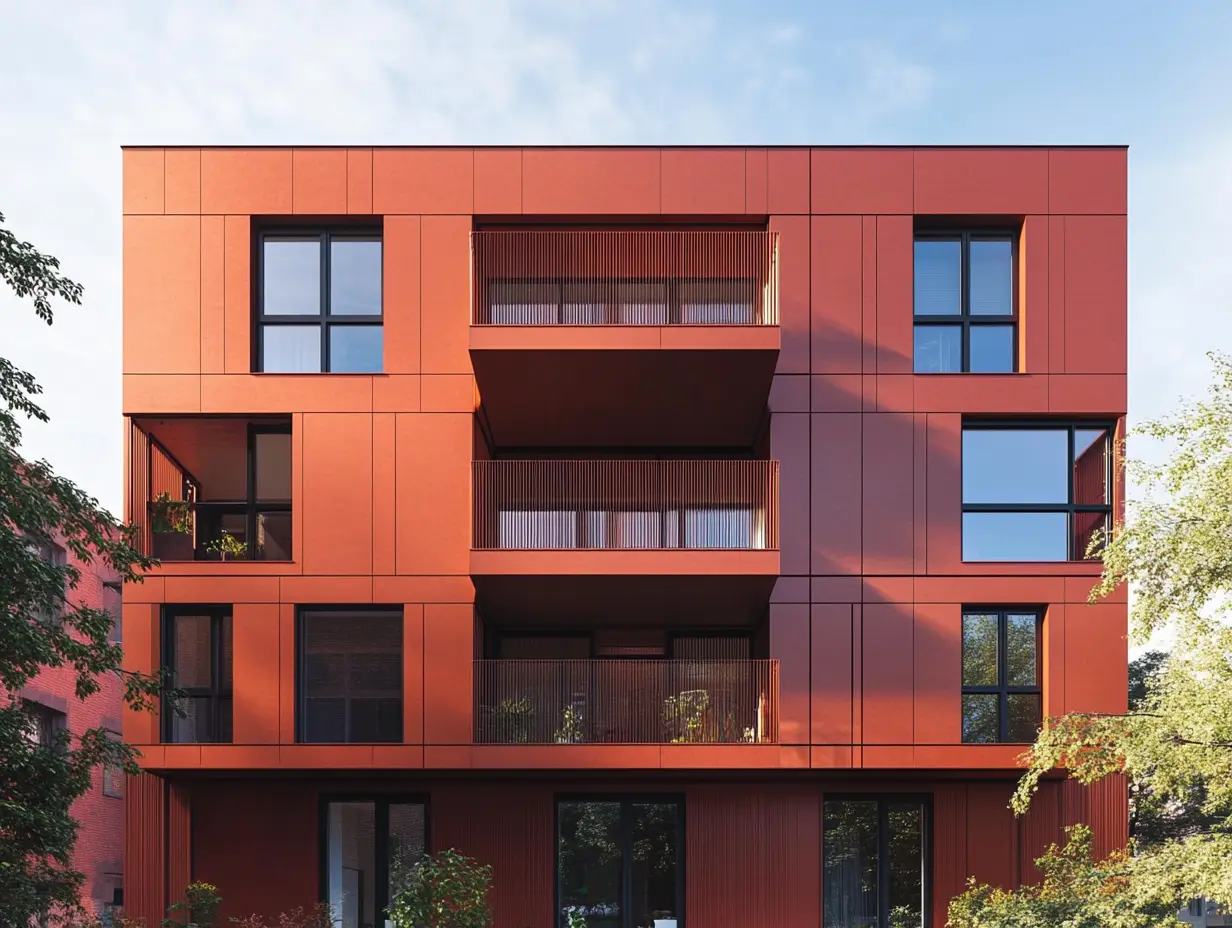Leave Your Message
Towards 2025, the phenomenal transformation that lightens the construction industry worldwide at large is noticeably on its way in terms of building materials which are now becoming more and more sustainably and innovatively finished. Now, one of the greatest has been the emergence of Plastic Cladding Exterior, increasingly becoming famous by various buyers globally because of its versatility, durability, and sustainability. Such demand is being driven, however, by all forms of requirements for materials that not only serve as attractive finishing in construction but are also environmentally friendly. Companies such as Linyi Qizhu Environmental Technology Co., Ltd. are already surpassing this movement with the advanced products which fit in the modern architecture of creating more emphasis on healthy and green building practices.
Changes in Plastic Cladding Exterior technology-advanced materials building, as well as addressing the problem of change in climate and depletion of resources, became very important reasons for the development of this innovation. Demand for this property is increasing as companies and consumers become more conscious of their ecological footprints, along with improved demand for such plastic cladding products which should be able to withstand all the weather conditions along with insulation and energy efficiency. This blog will elaborate on the upcoming trends in Plastic Cladding Exterior looking into modern innovative designs, their manufacturing processes, and the impacts that such materials promise for global buyers in the ever-changing construction industry.

Changing by 2025, the world's exterior designs and cladding in plastic are being reinvented through the use of new materials that serve the purposes of aesthetics and functionality. Crossovers and small cars have increasingly led to great importance being attached to versatile and durable exteriors. Manufacturers now turn to innovative plastics that not only protect but also beautify vehicles. The most promising development includes lightweight, recyclable composites that offer advanced resistance against environmental influences. This is not for the sake of the environment but is spurred by improved customer demand for cars that maintain appearance and durability over time. As global buyers seek vehicles that combine utility with style, this advance in plastic cladding will prove a significant challenge in shaping the future of automotive design.

The market for plastic cladding is rapidly changing these days as the aesthetic and durability find a focus. As the global buyers prepare for the year 2025, the trends indicate an increasing inclination toward sleek, modern designs that will beautify the view of the buildings. Manufacturers have been launching innovative products that look like traditional materials while offering the benefits of plastic, such as low maintenance and excellent weather resistance.
Launching unique colors and finishes like the new agate grey shiplap PVC cladding, it would appear the world is slowly shifting toward customizing products for the consumers. These innovations equally serve aesthetic functions, extending the limits of aesthetics in the construction industry. With sustainability being paramount, eco-friendly cladding solutions are on the rise to cater to buyers focused on environmentalism, indicating that the future for plastic cladding seems positive.

Continuing, as the years turn into 2025, the world of exterior plastic fittings is distinctly changing its shape as consumer mindsets are moving gradually away from conventional aesthetics and shipping functional diversity. Now, as the trends show greater interest in designs that have very uncommon colors-Agate Grey for instance-homeowners seek cladding options that have stood the test of time and are less amenable to maintenance, aside from providing curb appeal.
New siding adds to the already crowded field of competition in the market as manufacturers are adding innovative variations for consumer demand. Be it rustic design or innovative vaulted finishes, wide plastic cladding now complements almost all architectural forms. Thus, buyers can choose materials depending on personal taste, while covering functional requirements, such as weather resistance or insulation properties. This perfect combination of flows between beauty and practicality really shows promise for the exterior cladding future.

The year 2025 will usher in distinct and probably revolutionary reforms globally within the plastic cladding business. Manufacturers are reforming processes and materials within the datum requirements for durability and beauty to comply with stricter environmental regulations and sustainability initiatives. There is a mandated shift toward innovation within the materials-as well as products-work into meeting "eco-friendly practice" standards.
Nonetheless, the market is also taking the novelty of other players in the arena, that is, composite materials that are like natural wood for cladding as alternatives to the traditional plastic cladding. Beyond aesthetics, the newly entered factors would also become sources of relief from some of the regulations on plastic products. Now, it is up to the buyers to study the trend that is currently taking place as they retrofit their projects in the future.
Every passing day sees an increase in the demands for durable and high-performance materials. This gives plastic cladding the front running position in the construction arena. New innovations in this domain are aimed at durability, which must meet stringent performance requirements. Improvements in material technology are enabling plastic cladding systems to withstand environmental stresses, thus making them increasingly attractive for a range of applications in assorted climates.
Another trend is developing towards ecological methods of production and aesthetic versatility. The manufacturers are introducing its new colors and textures to an extent that design customization is now virtually endless. With competition almost becoming cutthroat among siding choices, plastic products are now really starting to compete with traditional materials. Thus, this evolution gives clients all over a greater choice that definitely offers durability and style for exterior applications.
Advancing in technology in plastic cladding manufacturing, 2025 would bring something new to be conveyed with the significant expectations that an attended facility should bring into existence and the visions captured in the minds of the standard designers and companies around the globe. Continuous innovations really make production processes more efficient and sustainable along with producing new lighter, less-rotten cladding materials. But, they also add beauty to the architecture without compromising energy savings from the better insulation properties.
The industry's premise relies on demands from the ever-increasing need of the cladding materials to include them in the categories of eco-friendly materials. Thus, the manufacturers use recycled plastics and bio-based resins to make these goods suitable for market preferences vis-a-vis sustainability goals being laid out across the globe. The consumer's current inclination towards quite customization and the incorporation of smart technology such as integrated sensors within a cladding system will probably change the course of buildings linking with their environments keeping plastic cladding at the cutting edge of modern architecture.
Plastic cladding will be a leading force in advancing modern architecture by 2025, as urban growth continues to change. With the aid of material innovations, like fire-retardant fungi-based cladding, the building industry is now turning towards a few eco-friendly solutions that ensure safety as well. This shift demonstrates the increasing demand for sustainable building practices but also indicates that plastic materials are conforming to the requirements of contemporary design.
Yet, function aside, aesthetics are still considered very important. Future trends will see a variety of bold colors and textures that will redefine the urban landscape to ensure efficiency and beauty in buildings. Sustainable growth will soon be the focus of urban center emanations, making plastic cladding a necessary complement to structures in modern city life to minimize environmental effects. Exciting roads lay ahead where technology and design meet in this space.
Sustainable practices in the production of plastic cladding will be at the most crucial stage as we begin to knock on the doors of 2025. Rising awareness of environmental issues among buyers around the world must drive manufacturers to innovate and offer alternatives that are more environmentally considerate. The claddings and, in particular, those that are more likely to contain recycled materials are headed towards a more sustainable future. The whole development complements general trends in minimizing damage to nature but still managing to keep things looking good.
Recently some products have been introduced that bring all kinds of durability and resistance benefits but they also go one step further and replicate the texture and features that are available in natural materials to provide maximum functionality and dimensional flexibility in design form. This is very much evident in a number of sectors such as automotive and architecture, where black plastic cladding becomes a prime ingredient in modern designs. More and more innovative developments in plastic cladding that meet the demands of eco-consumers for sustainability, performance, and style can be expected as consumers continue to demand greener solutions.
The transition of markets from plastic cladding to vehicles is rapidly conspicuously obvious as it goes on to various other segments like building from 2025. The recent reports show a further rising trend in making plastic cladding tougher and high-functional for added uses, particularly for vehicles. It seems to redefine the exterior and functionality of an auto while yelling as well at the vehicles growling for endurance in different weather conditions.
Plastic cladding is increasingly being adopted in the construction sector due to its affordability and its flexible concord. Emerging innovative products are being matched up against age-old traditional materials: there would be a wide availability of beautiful and green alternatives for the builders and for do-it-yourselfers. Investment in plastic cladding solutions is forecasted to be upwards as stakeholders within projects continue to realize the long-term gains and benefit from incorporating these materials into developing a smart choice for trendy and durable projects.
Plastic cladding will be presented with new design trends with sustainability and resilience in mind by the year 2025. Vinyl siding, long dominating cladding in the last century, has started to cede ground to competing materials like stucco and fiber cement. No wonder the demand for glowingly adaptable cladding is transcending fashion: the recent cladding market dynamics emphasize growing consumer preferences for materials that beautify and are eco-friendly.
A strong current trend is a multi-textured facade, which brings endless eye-pleasing designs and durability to homes. Also on the market, it seems there are inventive developments in PVC and capped polymer claddings for modern design and function. With manufacturers gearing up with their production work, it will be in the forthcoming years that exterior cladding will express a marriage of design and functionality, setting the stage for home exteriors internationally.
The market is evolving due to a growing focus on aesthetics and durability, with consumers increasingly preferring sleek, modern designs that enhance the visual appeal of buildings.
Manufacturers are introducing innovative products that mimic traditional materials while offering the benefits of plastic, such as lower maintenance needs and better weather resistance.
There is a notable trend towards unique color palettes and customizable options, such as the introduction of agate grey shiplap PVC cladding.
As sustainability gains importance, the market is seeing a rise in eco-friendly cladding solutions that appeal to environmentally conscious buyers.
Consumer preferences are shifting toward aesthetic and functional diversity, with a greater interest in options that combine beauty, durability, and ease of maintenance.
Increasing competition has led manufacturers to continually innovate, resulting in a wider variety of siding options that cater to diverse architectural styles.
Consumers look for cladding that not only enhances curb appeal but also provides practical features, such as weather resistance and insulation properties.
The future of exterior cladding is promising and vibrant as consumers embrace a combination of aesthetic beauty and practical functionality.
The variety in plastic cladding now caters to a wide range of architectural styles, from rustic designs to sleek modern finishes.
Consumers are increasingly seeking materials that align with their personal tastes while also addressing functional requirements, shaping the design landscape of exterior plastic cladding.
